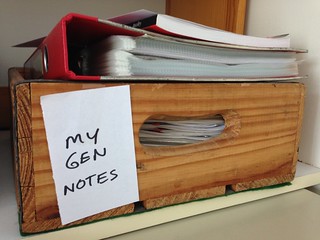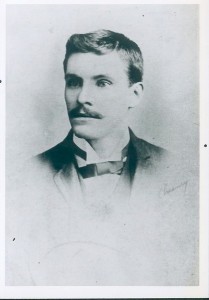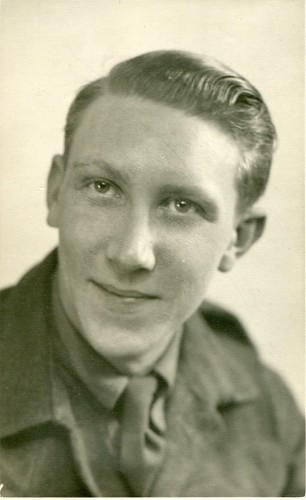Well, I asked for it, and it arrived in my inbox today — the topics for the first week of Thomas MacEntee’s Genealogy Do-Over. They are simple enough, but oh so hard to contemplate. The first step is to set aside previous research. This will involve different things, depending on where one’s research exists. For me, that means several formats and locations:
• my database in Reunion
• my digital files on Dropbox, including scans of certificates, assorted notes, forms, and logs
• my scanned photos, managed in Aperture — these are family photos, but also more scans of documents, and even photos of microfilms
• hundreds of notes, references to online searches, to-do lists, and probably much more, in Evernote
• digitized interviews with family members dating back decades, stored in iTunes
• original photos and slides, some filed, but hundreds only roughly organized, in boxes around me in my office
• paper files, including more notes(!), certificates, diaries, letters, etc. — these are also mostly filed, but there are some scary piles as well
Whew! The main reason for “setting aside” is to avoid accepting previous assumptions, carelessly applied sources, or facts unsupported by any research at all. As Thomas points out, that doesn’t mean throwing away valuable resources, such as certificates and other goodies. I’ve thought a lot about how to approach this because I know that many of the sources I’ve collected have citations that are close enough to be fixable to the standard I am after. I started the fixing work earlier this year and, along the way, I developed a good workflow for capturing new sources and their citation information. I won’t ditch that work, but I need to look at each discovery anew.
What I will do is create a brand new database in Reunion. I have resisted this idea because I hate retyping anything, but it seems like the best option if I am to commit to this do-over.




